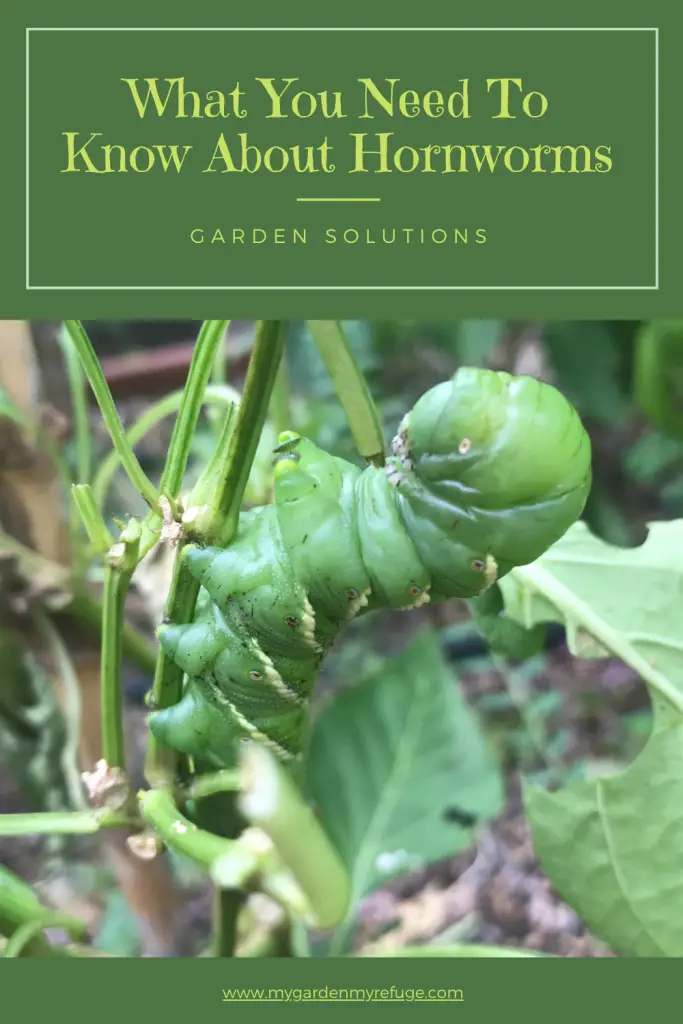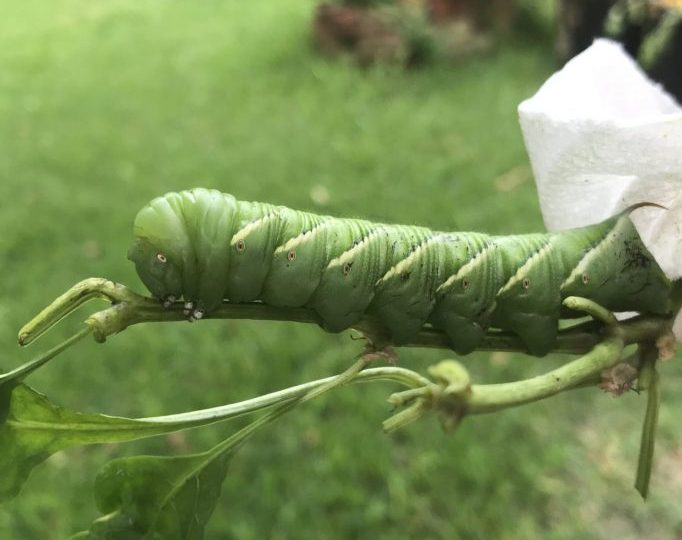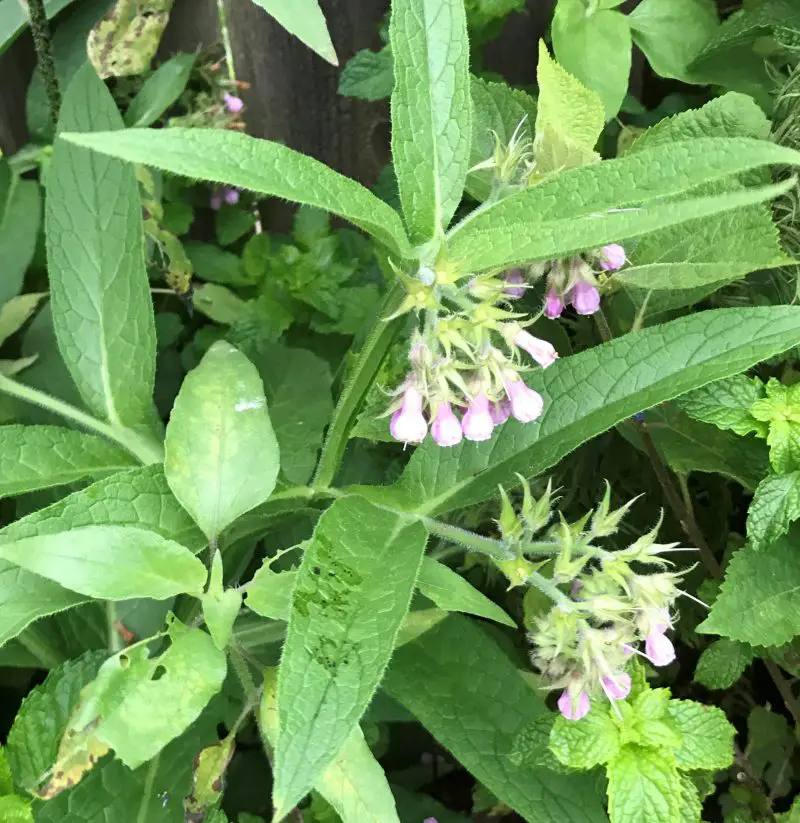One summer, while taking a morning garden walk, I noticed one of my tomato plants missing its top growth. It looked like something had devoured it to a skinny stem. After a thorough inspection, I noticed three unfamiliar-looking caterpillars. I picked them up and squashed them, thinking that was the end. The following day, I noticed more damage on another plant. This time, the caterpillar was much more prominent in size, and its physiology was clearer. To my horror, I realized it was my long-feared Tomato Hornworm. For the last ten years, I have only heard about it and its destructive behavior in the garden. First, however, let’s learn how to identify the hornworm correctly from other similar-looking worms.
What is Hornworm?
The hornworm is one of the enormous worms you would ever encounter in the garden. It is the caterpillar stage of the sphinx or hawk moth. An attractive massive moth that feeds on flowers’ nectar at night. There are two kinds of hornworms: Tomato and tobacco hornworms. Along the side, we can mention the Vine Sphinx moth, which looks very similar at first glance.
The hornworms feed on the nightshade plant family, including tomatoes, peppers, eggplants, potatoes, and tobacco. The vine worm feeds mainly on grapevine leaves.
This pest is dominant in North America, notably in the United States. However, we can also find it in parts of Northern Mexico and parts of Southern Cannada.

Tomato Hornworm vs. tobacco hornworm vs. vine sphinx worm
Although very similar at first glance, there are some intricate differences. Starting with the horn at the end of the body, the tomato hornworm’s horn is dark blue, the tobacco worm’s horn is red, and the vine worm has none. They all have whitish stripes on the sides of their bodies with slight differences. The tobacco worm has a black line on the outer edge of each stripe. The vine worm stripes are less pronounced, and the stripes on the tomato hornworm form a V shape.
https://entnemdept.ufl.edu/creatures/field/tobacco_hornworm.htm
What is the lifecycle of the hornworm?
Hornworms require warm temperatures to complete their lifecycle. It takes about 30 days for the egg to metamorphose into the adult moth. Cooler temperatures may stall the stages to reach 40 days or so.
After mating in spring, the adult female Sphynx moth lays its eggs on the underside of the host plant. The egg then hatches into a larva and feeds on the plant until it reaches its full size. Tomato and tobacco hornworms larva may migrate to another host plant if food runs low.
The larva then borrows into the ground to turn into a pupa. It takes about two weeks for a summer pupa to emerge into a moth. On the other hand, autumn pupa overwinters in the ground to emerge the following spring.
The adult form of a hornworm is a sizeable nocturnal moth. It feeds on nectar, which makes it a pollinator. The moth holds several names, such as hawkmoth and sphynx moth. However, the most interesting one is the hummingbird moth. Its graceful flying habits, hovering over the flowers, resemble the hummingbirds’.
How to control hornworms in the kitchen garden?
The first step to pest control is management. Applying crop rotation and lightly tilling the ground disturb the worms’ lifecycles. It also prevents severe infestation.
Constantly assess the damage before taking action. If it is small, physical removal may be the appropriate route. Otherwise, use an organic pest killer to take care of the pest. BT (Bacillus thuringiensis) is a bacterium that kills soft-bodied insects by destroying their digestive system. It comes in a powder or concentrated liquid form. Make sure to follow the directions of use on the label.

How to detect hornworms on a plant?
- Leaves or plants are completely chewed down.
- Large clumps of dropping on the leaves.
- Look along the stem of the plant carefully. The caterpillar camouflages well with the foliage.
What are hornworm predators?
At the early caterpillar stage, ladybugs and lacewings are the main predators. When the worm gets bigger, it becomes a juicy food for different birds, including chickens. Yet, one interesting predator is the parasitoid wasp. These wasps are a family of wasps that lay eggs on host creatures that paralyze the hornworm before laying their eggs on them. The caterpillar becomes a food source for the developing egg, leading to its death.



